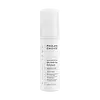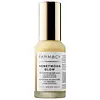What's inside
What's inside
 Key Ingredients
Key Ingredients

 Benefits
Benefits

 Concerns
Concerns

 Ingredients Side-by-side
Ingredients Side-by-side

Water
Skin ConditioningGlycolic Acid
BufferingSodium Hydroxide
BufferingChamomilla Recutita Flower Extract
MaskingAloe Ferox Leaf Juice Extract
Skin ConditioningCamellia Oleifera Leaf Extract
AstringentSodium Hyaluronate
HumectantPanthenol
Skin ConditioningSodium PCA
HumectantPropylene Glycol
HumectantButylene Glycol
HumectantHydroxyethylcellulose
Emulsion StabilisingPolyquaternium-10
Phenoxyethanol
PreservativeSodium Benzoate
MaskingWater
Skin ConditioningLactic Acid
BufferingPropanediol
SolventJojoba Esters
EmollientGlycolic Acid
BufferingPotassium Hydroxide
BufferingSalix Alba Bark Extract
AstringentCarthamus Tinctorius Oleosomes
EmollientVitis Vinifera Seed Oil
EmollientHibiscus Sabdariffa Flower Extract
Skin ConditioningCitric Acid
BufferingHoney Extract
HumectantEchinacea Purpurea Root Extract
MoisturisingPropolis Extract
Skin ConditioningRoyal Jelly Extract
Skin ConditioningHydrolyzed Sodium Hyaluronate
Skin ConditioningHydrolyzed Hyaluronic Acid
HumectantCurcuma Longa Root Extract
MaskingArgania Spinosa Kernel Oil
EmollientZingiber Officinale Root Extract
MaskingAmaranthus Caudatus Seed Oil
EmollientLimnanthes Alba Seed Oil
Skin ConditioningVaccinium Myrtillus Fruit/Leaf Extract
AstringentSaccharum Officinarum Extract
MoisturisingCitrus Aurantium Dulcis Fruit Extract
MaskingCitrus Limon Fruit Extract
MaskingAcer Saccharum Extract
Skin ConditioningMelia Azadirachta Leaf Extract
Skin ConditioningHelianthus Annuus Seed Oil
EmollientMelia Azadirachta Flower Extract
Skin ConditioningSalvia Hispanica Seed Oil
MoisturisingCetearyl Alcohol
EmollientGlycerin
HumectantArachidyl Alcohol
EmollientSclerotium Gum
Emulsion StabilisingCoco-Glucoside
CleansingPolyacrylate Crosspolymer-6
Emulsion StabilisingBehenyl Alcohol
EmollientArachidyl Glucoside
EmulsifyingSodium Benzoate
MaskingTocopherol
AntioxidantPotassium Sorbate
PreservativeCorallina Officinalis Extract
Skin ConditioningPolyglyceryl-10 Stearate
Skin ConditioningGluconolactone
Skin Conditioning1,2-Hexanediol
Skin ConditioningOcimum Basilicum Flower/Leaf Extract
TonicOcimum Sanctum Leaf Extract
Skin ConditioningT-Butyl Alcohol
PerfumingGlucose
HumectantCalcium Gluconate
HumectantCitral
PerfumingWater, Lactic Acid, Propanediol, Jojoba Esters, Glycolic Acid, Potassium Hydroxide, Salix Alba Bark Extract, Carthamus Tinctorius Oleosomes, Vitis Vinifera Seed Oil, Hibiscus Sabdariffa Flower Extract, Citric Acid, Honey Extract, Echinacea Purpurea Root Extract, Propolis Extract, Royal Jelly Extract, Hydrolyzed Sodium Hyaluronate, Hydrolyzed Hyaluronic Acid, Curcuma Longa Root Extract, Argania Spinosa Kernel Oil, Zingiber Officinale Root Extract, Amaranthus Caudatus Seed Oil, Limnanthes Alba Seed Oil, Vaccinium Myrtillus Fruit/Leaf Extract, Saccharum Officinarum Extract, Citrus Aurantium Dulcis Fruit Extract, Citrus Limon Fruit Extract, Acer Saccharum Extract, Melia Azadirachta Leaf Extract, Helianthus Annuus Seed Oil, Melia Azadirachta Flower Extract, Salvia Hispanica Seed Oil, Cetearyl Alcohol, Glycerin, Arachidyl Alcohol, Sclerotium Gum, Coco-Glucoside, Polyacrylate Crosspolymer-6, Behenyl Alcohol, Arachidyl Glucoside, Sodium Benzoate, Tocopherol, Potassium Sorbate, Corallina Officinalis Extract, Polyglyceryl-10 Stearate, Gluconolactone, 1,2-Hexanediol, Ocimum Basilicum Flower/Leaf Extract, Ocimum Sanctum Leaf Extract, T-Butyl Alcohol, Glucose, Calcium Gluconate, Citral
Ingredients Explained
These ingredients are found in both products.
Ingredients higher up in an ingredient list are typically present in a larger amount.
Glycolic Acid is arguably the most famous alpha hydroxy acid (AHA) with tons of research backing its benefits.
It is found naturally in sugar cane but the form used in skincare is usually synthetic for purity and stability.
Glycolic acid removes the top layer of dead skin cells to allow newer and fresher ones to emerge.
AHAs work by breaking down the structural “glue” that holds old skin cells in place. When that buildup is gone, your skin can renew itself more efficiently.
Research also shows glycolic acid stimulates collagen production, helping to firm and thicken the skin over time. This is one of its biggest advantages over other AHAs.
Overall, glycolic acid helps with:
Fun fact: Glycolic acid boosts skin hydration by helping it produce molecules that increase hyaluronic acid naturally.
To work best, glycolic acid products should have a pH between 3-4 (that’s where exfoliation is most effective but still gentle on skin).
The pH and concentration of a product are key to its effectiveness:
It is normal to feel a slight stinging sensation when using glycolic acid. This usually fades as your skin adjusts.
Because glycolic acid has the smallest molecular size in the AHA family, it can penetrate deeper, which enhances its effectiveness but also makes it more likely to irritate sensitive skin.
If your skin is very sensitive or prone to rosacea, glycolic acid may be too strong; in that case, try milder options like lactic acid or a PHA instead.
Recent studies suggest glycolic acid might even help protect against UV damage. But don’t skip sunscreen! Freshly exfoliated skin is more sensitive to the sun.
Glycolic acid is a skincare superstar. It smooths, brightens, hydrates, and firms the skin. Unless you’re highly sensitive, it’s well worth adding to your routine.
Read more about some other popular AHA's here:
Learn more about Glycolic AcidSodium Benzoate is a preservative. It's used in both cosmetic and food products to inhibit the growth of mold and bacteria. It is typically produced synthetically.
Both the US FDA and EU Health Committee have approved the use of sodium benzoate. In the US, levels of 0.1% (of the total product) are allowed.
Sodium benzoate works as a preservative by inhibiting the growth of bacteria inside of cells. It prevents the cell from fermenting a type of sugar using an enzyme called phosphofructokinase.
It is the salt of benzoic acid. Foods containing sodium benzoate include soda, salad dressings, condiments, fruit juices, wines, and snack foods.
Studies for using ascorbic acid and sodium benzoate in cosmetics are lacking, especially in skincare routines with multiple steps.
We always recommend speaking with a professional, such as a dermatologist, if you have any concerns.
Learn more about Sodium BenzoateWater. It's the most common cosmetic ingredient of all. You'll usually see it at the top of ingredient lists, meaning that it makes up the largest part of the product.
So why is it so popular? Water most often acts as a solvent - this means that it helps dissolve other ingredients into the formulation.
You'll also recognize water as that liquid we all need to stay alive. If you see this, drink a glass of water. Stay hydrated!
Learn more about Water